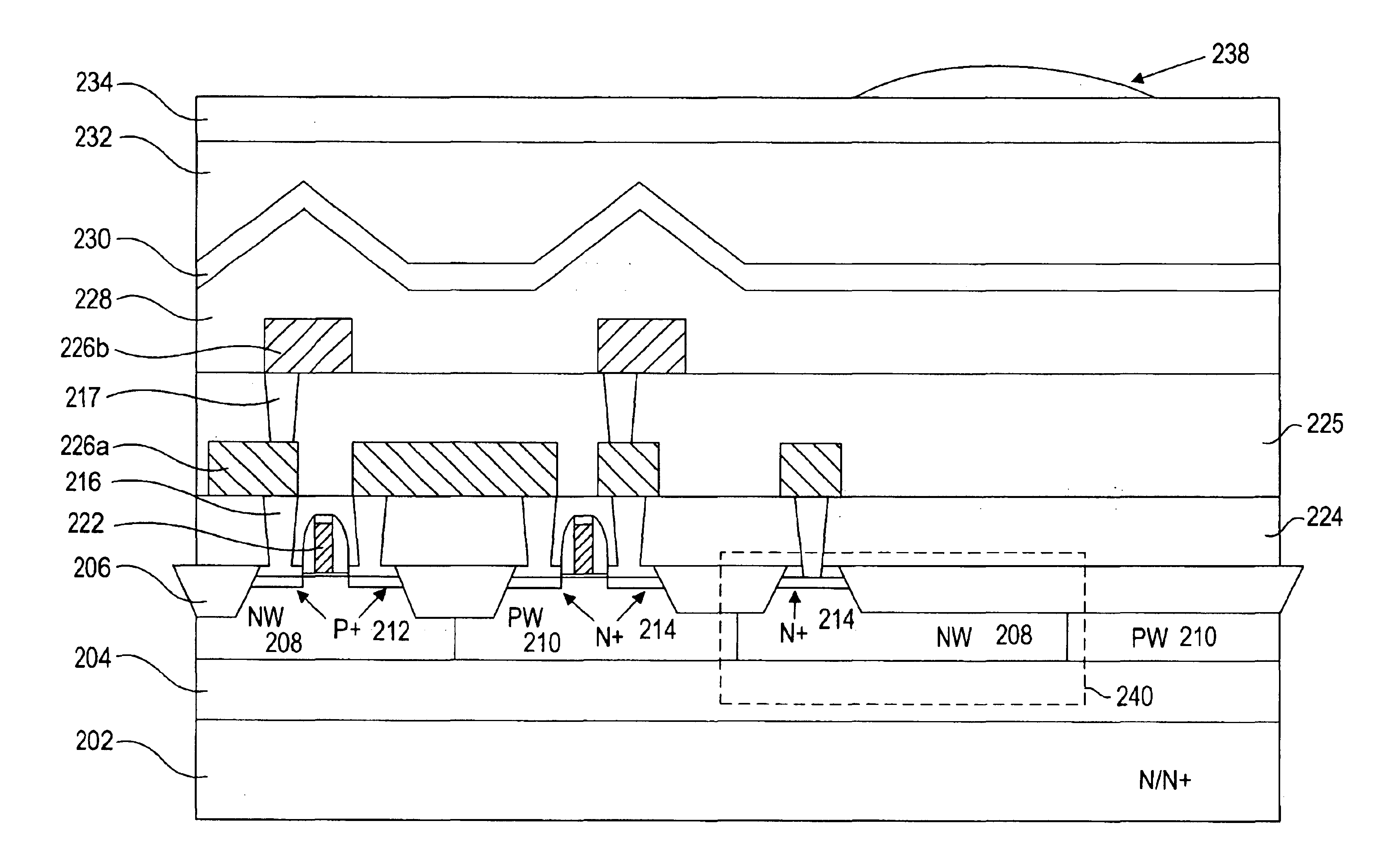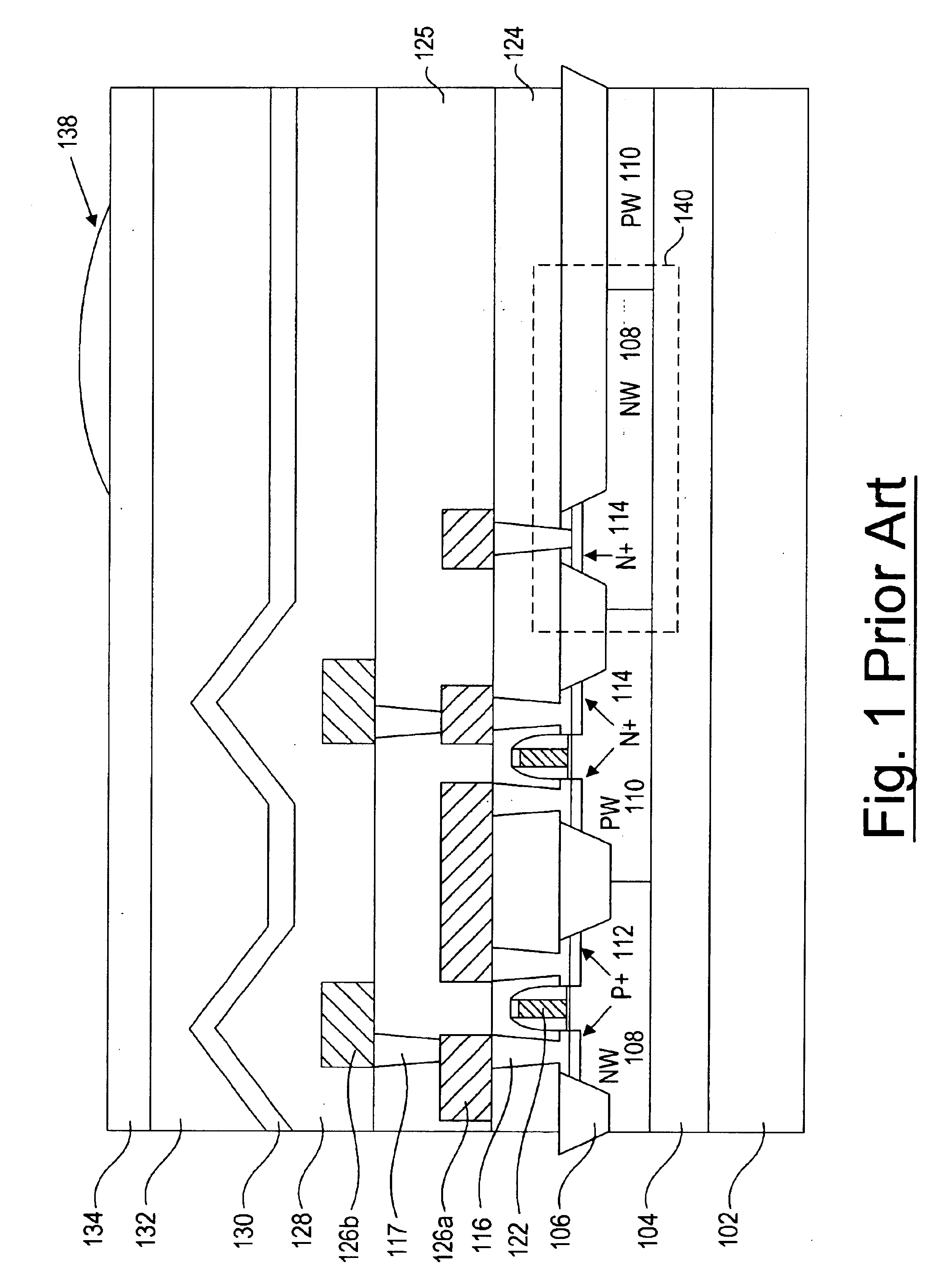CMOS image sensor with substrate noise barrier
a noise barrier and image sensor technology, applied in the field of solid-state image sensors, can solve the problems of not being compatible with a standard cmos process, consuming a lot of power, and the signal generated from the direct measurement of the current from the photoelectric conversion typically has a poor signal to noise ratio (s/n), so as to prevent latching and reduce the distance between the micro lens and the corresponding photodiode.
- Summary
- Abstract
- Description
- Claims
- Application Information
AI Technical Summary
Benefits of technology
Problems solved by technology
Method used
Image
Examples
Embodiment Construction
Embodiments of the invention are discussed herein with reference to FIGS. 2-6. However, those skilled in the art will readily appreciate that the detailed description given herein with respect to these figures is for explanatory purposes as the invention extends beyond these limited embodiments.
Referring now to FIG. 2, a CMOS image sensor according to one embodiment of the present invention is shown. Unlike the conventional CMOS image sensor, a CMOS image sensor according to one embodiment of the present invention includes an N or N+ type substrate layer 202, in contrast to a conventional P+ substrate.
A P− type Epi layer on top of an N / N+ type substrate 202 is connected to the ground and N / N+ type substrate 202 is connected to certain high voltage e.g., 2V. A depletion layer is formed between the interface P−Epi layer 204 to the N / N+ substrate 202. This depletion layer minimizes the P−EPI field-free region which is just under the photo diode depletion part also prevents photo genera...
PUM
 Login to View More
Login to View More Abstract
Description
Claims
Application Information
 Login to View More
Login to View More - R&D
- Intellectual Property
- Life Sciences
- Materials
- Tech Scout
- Unparalleled Data Quality
- Higher Quality Content
- 60% Fewer Hallucinations
Browse by: Latest US Patents, China's latest patents, Technical Efficacy Thesaurus, Application Domain, Technology Topic, Popular Technical Reports.
© 2025 PatSnap. All rights reserved.Legal|Privacy policy|Modern Slavery Act Transparency Statement|Sitemap|About US| Contact US: help@patsnap.com



